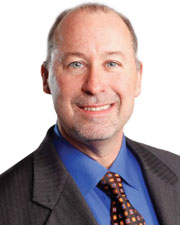Update of Suffolk Cty. Health Services protocol for addressing underground injection control structures - by Chuck Merritt

Over the past several years, the Suffolk County Department of Health Services (SCDHS) has managed the investigation and remediation of underground injection control (UIC) structures such as sanitary systems, floor drains, and storm water dry wells. Chemical discharges into these structures can potentially impact groundwater and the Sole Source Aquifer that lies beneath all of Long Island.
The origin of the UIC program starts with the U.S. Environmental Protection Agency (USEPA) in 1974. However, because the EPA does not have the resources to manage local UIC cleanouts, they delegate that authority to local agencies that are willing and capable. Nassau County does not have the same local oversight as Suffolk and many times environmental consultants contact the USEPA directly for any kind of approval letter or No Further Action (NFA) document. This can be problematic as the EPA is busy and they normally expect a Qualified Environmental Professional (QEP) to manage the process and sign off on the clean-up.
Because the SCDHS is willing to manage and provide oversight, there is a certain protocol they require. This protocol potentially consists of several steps and can be time consuming depending on the nature and size of the property. But in the end, a much-coveted (especially by lenders and real estate attorneys) No Further Action (NFA) letter will be received.
To start, an issue with the UIC needs to be discovered. This typically occurs when consultants advise their client that an impact (contamination) may be present in the sediment/sludge at the base of an UIC. This can be from current or historical uses of the property that involve manufacturing or industrial use. In addition, current or past tenants such as drycleaners, printing facilities, car repair shops, and even dental practices can trigger a recommendation to sample the structures in question. The SCDHS also has the authority to sample UICs at a property if they believe a problem may exist.
Once the initially UIC samples are obtained, they are analyzed by a NYSDOH-approved laboratory and compared by the consultant to the list published by the SCDHS that lists many chemicals with a concentration number not to be exceeded (Action Levels). If the laboratory results indicate that Action Levels are exceeded, the SCDHS must be notified. The report outlining a narrative of the findings, site plan of where the samples were obtained, and laboratory data & report is submitted to the health department with a review fee of $550.
The SCDHS has experienced representatives that handle the program. Typically, they reach out to the consultant and owner and may request a meeting at the site. At that meeting, a conversation takes place about the potential of sampling additional structures the County may suspect of being impacted. After the meeting, a Notice to Remediate (NTR) letter is issued to the owner who will retain a licensed remediation company experienced in these types of cleanouts. A recently added step by SCDHS now requires that prior to remediation, the consultant will submit a remedial action work plan containing the name of the remediation contractor along with disposal facility approval letters. The SCDHS normally approves this plan quickly (within days of receipt).
At the completion of the remediation, the consultant collects end point samples in the remediated structures under the oversight of the SCDHS. This confirms that the remediation was successful. Should the results indicate that exceedances remain in one or more structures, the contractor will return and remove more material. This does happen from time to time especially if a substantial volume of chemicals has been accumulating in a structure for a long period of time. Upon completion, another round of sampling will be conducted to prove all impacted material has been removed from the affected structures.
To complete the project, the contractor takes all material to the approved disposal facility and submits the manifests to the owner/consultant. At this point, a fee of $1,100 is submitted to the SCDHS to cover the endpoint sampling oversight and review of the final or closure report. After reviewing the final report, laboratory data, and waste disposal manifests, the SCDHS will issue the NFA letter to the site owner. This document is crucial when a financial institution is lending money and needs to be comfortable that all work has been completed in a satisfactory manner. The document will also serve the owner of a property in future transactions where the cleanout work conducted and NFA can be presented.
Chuck Merritt, LEED AP, is the president of Merritt Environmental Consulting Corp., Hauppauge, N.Y
Suffolk County IDA supports expansion of A&Z Pharmaceuticals


The evolving relationship of environmental consultants and the lending community - by Chuck Merritt
When Environmental Site Assessments (ESA) were first part of commercial real estate risk management, it was the lenders driving this requirement. When a borrower wanted a loan on a property, banks would utilize a list of “Approved Consultants” to order the report on both refinances and purchases.









.jpg)